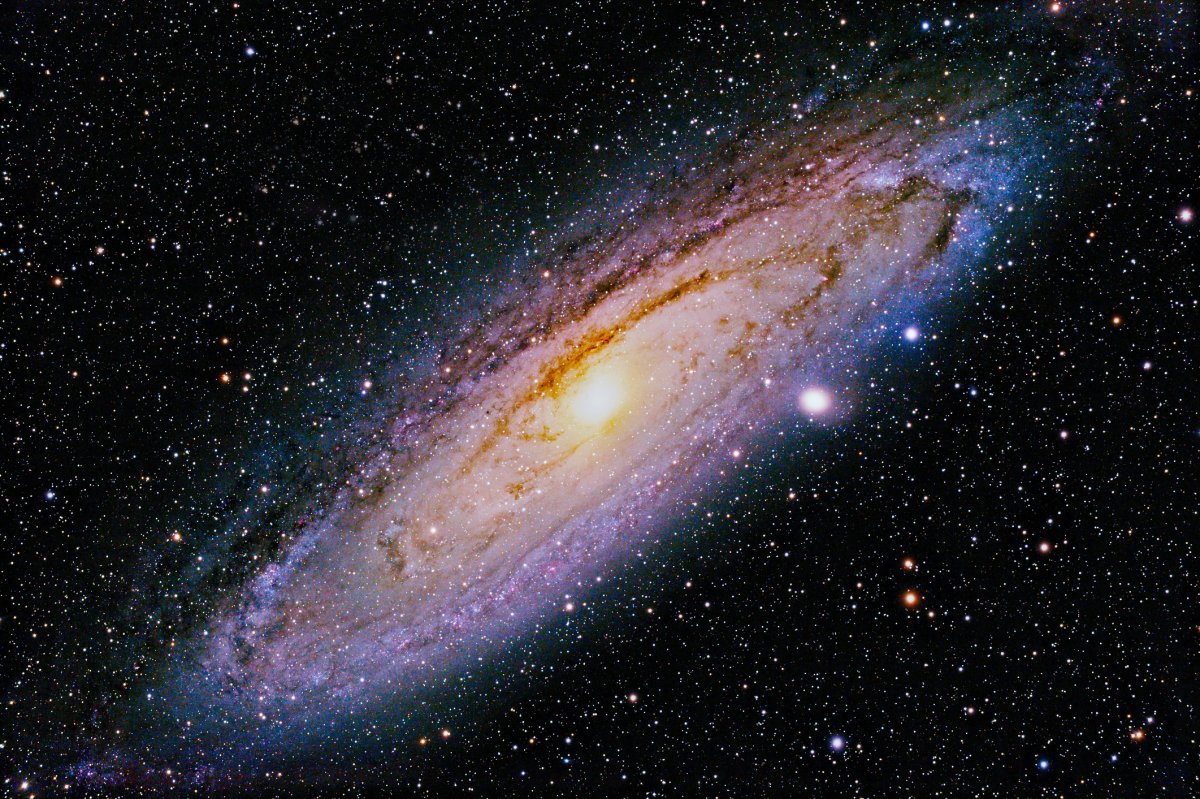The carbon that is a key component of the human body—and all other lifeforms on Earth—may have traveled outside the galaxy after being created before returning on a cosmic "conveyor belt," an author of a new study has suggested.
Carbon is a chemical element, widely distributed in nature, and is essential to life as we know it. Like almost all other elements—apart from hydrogen and helium—it is created inside stars through the process of nuclear fusion and distributed throughout the universe when those stars die, becoming a key element in the chemistry of life.
Planets like Earth take shape by integrating these star-forged elements into their composition—whether it's the iron at the core, the oxygen in the atmosphere, or the carbon that forms the foundation of life on the surface.
In a study published in The Astrophysical Journal Letters, a team of researchers have demonstrated that carbon—along with other star-formed atoms—takes an unusual journey after the demise of the cosmic entity that created them.

In galaxies like the Milky Way, which are still actively forming new stars, the carbon and other atoms are expelled from the galaxy of origin and begin circling them in vast "halos" of diffuse, hot and ionized gas that extend into intergalactic space.
The halos—known as the circumgalactic medium—are dynamic in nature, functioning almost like cosmic conveyor belts. They draw material out of the galaxy and then push it back into the interior, where gravity and other forces can assemble it into planets, asteroids and new stars, among other cosmic objects.
"Think of the circumgalactic medium as a giant train station: It is constantly pushing material out and pulling it back in," study lead author Samantha Garza, a University of Washington (UW) doctoral candidate, said in a press release. "The heavy elements that stars make get pushed out of their host galaxy and into the circumgalactic medium through their explosive supernovae deaths, where they can eventually get pulled back in and continue the cycle of star and planet formation."
The results—based on observations conducted by the Cosmic Origins Spectrograph on the Hubble Space Telescope—have significant and "exciting" implications for our understanding of galaxy evolution, according to study co-author Jessica Werk, a UW professor and chair of the Department of Astronomy.
"The same carbon in our bodies most likely spent a significant amount of time outside of the galaxy!"
The latest study builds on previous research published more than a decade ago that demonstrated, for the first time, how galaxies like the Milky Way are surrounded by a circumgalactic medium—and that these halos contain hot gases enriched in oxygen. The recently published paper adds to this picture, demonstrating that they also circulate lower-temperature material like carbon.
"We can now confirm that the circumgalactic medium acts like a giant reservoir for both carbon and oxygen," Garza said. "And, at least in star-forming galaxies, we suggest that this material then falls back onto the galaxy to continue the recycling process."
Investigating the circumgalactic medium could cast new light on how this recycling process winds down—a process that eventually occurs in all galaxies.
"If you can keep the cycle going—pushing material out and pulling it back in—then theoretically you have enough fuel to keep star formation going," Garza said.
Do you have a tip on a science story that Newsweek should be covering? Do you have a question about astrophysics? Let us know via science@newsweek.com.
Reference
Garza, S. L., Werk, J. K., Berg, T. a. M., Faerman, Y., Oppenheimer, B. D., Bordoloi, R., & Ellison, S. L. (2024). The CIViL* Survey: The Discovery of a C iv Dichotomy in the Circumgalactic Medium of L* Galaxies. The Astrophysical Journal Letters, 978(1), L12. https://doi.org/10.3847/2041-8213/ad9c69




















 English (US) ·
English (US) ·